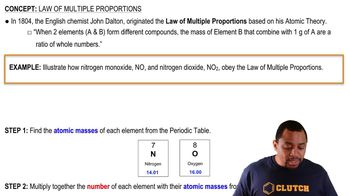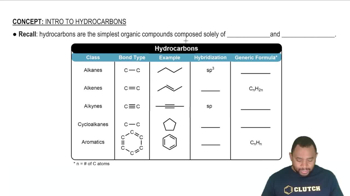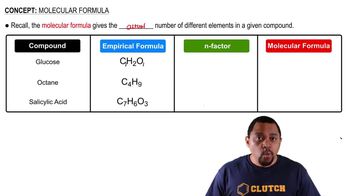Here are the essential concepts you must grasp in order to answer the question correctly.
Law of Multiple Proportions
The Law of Multiple Proportions states that when two elements form more than one compound, the ratios of the masses of one element that combine with a fixed mass of the other element can be expressed as small whole numbers. This principle highlights the discrete nature of chemical combinations and is fundamental in understanding how different compounds can be formed from the same elements.
Recommended video:
Law of Multiple Proportions
Hydrocarbons
Hydrocarbons are organic compounds consisting solely of carbon and hydrogen atoms. They can be classified into different categories, such as alkanes (saturated), alkenes (unsaturated with double bonds), and alkynes (unsaturated with triple bonds). Understanding the structure and types of hydrocarbons is essential for analyzing their chemical behavior and the relationships between different compounds.
Recommended video:
Molecular Formulas and Ratios
Molecular formulas represent the number and types of atoms in a molecule, providing insight into the composition of a compound. By comparing the molecular formulas of different hydrocarbons, one can determine the ratios of carbon to hydrogen atoms. These ratios are crucial for demonstrating the Law of Multiple Proportions, as they reveal how varying amounts of one element can combine with a fixed amount of another.
Recommended video:
Determining Molecular Formulas




